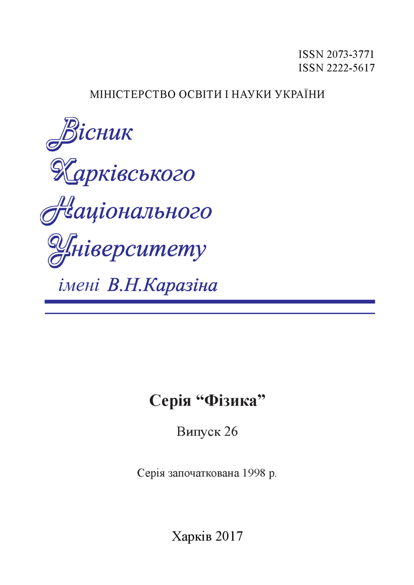Effective renormalization of g - factors anisotropic ferromagnetic narrow-band f –d -metal
Анотація
Досліджені спектри магнітних збуджень у вузькозонному феромагнітному провіднику, що містить локальні ( f ) і квазілокальні ( d ) магнітні моменти [6]. Ці спектри формуються спіновими кореляціями, що породжуються спільно внутрішньоатомними взаємодіями d електронів (обміном з електронами f оболонок і хаббардовским відштовхуванням), і їх міжвузельними перескоками, з урахуванням просторової хаотизації g -факторів d - і f - підсистем [6] і анізотропії параметрів «внутрішньоатомного» обміну між локальними і квазілокальними електронами. Отримані вирази для ефективних g -факторів взаємодіючих f - і d - магнітних підсистем у вузькозонному феромагнетику містять як ізотропні поправки до g -факторів невзаємодіючих f - і d - підсистем, так і поправки, залежні від відношення x, y - і z - компонент тензора локальних обмінних параметрів, причому знак поправок для f - і d - підсистем різний.
Завантаження
Посилання
Erdoes P., Robinson J. The Physics of Actinide Compounds. - New York, London: Plenum Press, 1983.
Chachkhiani L.G., Chachkhiani Z.B. Uranium intermetallic compounds. - Tbilisi: Metsniereba, 1990.
A. I. Akhiezer, V. G. Bar’yakhtar, and S. V. Peletminski., Spin Waves, North-Holland, Amsterdam (1968), Nauka, Moscow (1967).
S. V. Vonsovski., Magnetism, Vols. 1 and 2, Wiley, New York (1974), Nauka, Moscow (1971).
A. B. Beznosov and E. S. Orel. Fiz. Nizk. Temp., v. 30, # 9, 958 (2004).








3.gif)
